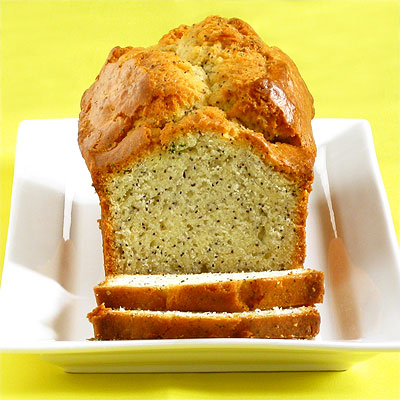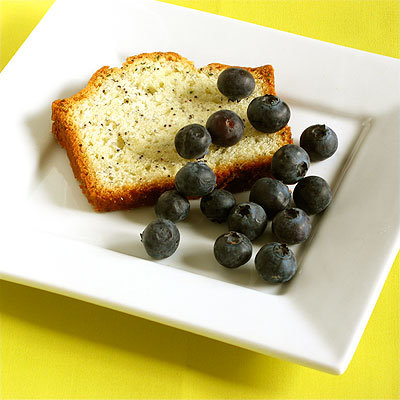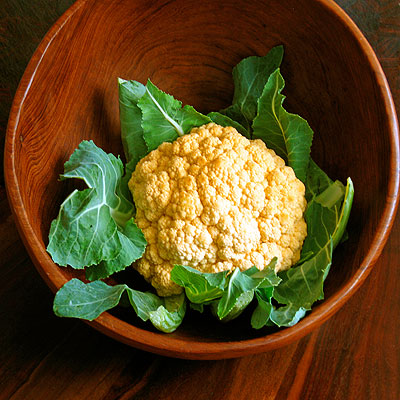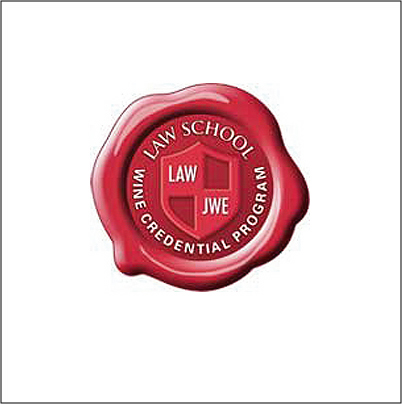
One-pound flour, one-pound eggs, one-pound butter and one-pound sugar. That’s pound cake, right? Add lemon and poppy seeds, that’s Lemon Poppy Seed Pound Cake. Right?
Well if pound cake really were that simple, all pound cakes would all be the same.
But how many times have you tried to make pound cake, only to find it flat, heavy, dry, or just flat-out boring? I’m here today to rescue you from another failed, overly dense pound cake. Or worse, a sunken, molten mess of a cake. But your redemption today won’t come in the form of a recipe. You aren’t getting off that easy. In fact, I’m here today to argue that you can make a great pound cake with just about any good recipe. Because technique is just as important, maybe even more so, than any good recipe you’ll come across.
To prove that point I chose a pound cake recipe from A Thought For Food, who adapted it from Rose Levy Beranbaum. Brian can recognize a good recipe, because he knows pound cake. So I can trust that this is a good recipe. That was part of the reason I chose his recipe. The other reason is the sweet story of love and connectedness that comes with his version of this cake. I am a sucker for silly love songs, what’s wrong with that? I’d like to know. So here I go again.
Enough silliness, I want to pass along techniques you can use with just about any pound cake recipe you already have. I want to share the secrets of making the perfect pound cake. But I’ll warn you this is certainly a case of “do as I say not as I do”; perfect baker I am not. But these tips have helped me.
 Lemon Poppy Seed Pound Cake
Lemon Poppy Seed Pound Cake
Technique #1: Take the time to “cream” the butter. This technique has got to be one of the most misleading cooking terms since Julia Child taught us to “fold” egg whites. Creaming the mixture does a couple of things. One, it softens the fats, and two, it aerates the mixture. Aerating is what helps your leavening agent do its thing. You see, the sugar in the mixture acts as an “abrasive”, and cuts into the fats producing small pockets of air in the mix. This is what we call structure. Most recipes say to start with the fat (usually butter) at “room temperature”. But this is misleading because actually 70*F is the ideal temperature for fats. Fats begin to “melt” above 70 degrees. Meaning all those air pockets you just built will begin to degenerate, because the fat has softened too much and has no strength.
Technique #2: Handle the eggs properly. Many recipes recommend “room temperature” eggs. But I am here to tell you (and I know I’ll hear it from the blogosphere) that if your recipe calls for whole eggs (not just whites or yolks) and you handle the incorporation of the eggs well– at home, small scale cooks like us with top of the line electric appliances will notice very little difference in the quality of their cake whether they used “room temperature” or chilled eggs. I am not alone in this proclamation. Not one cake recipe in the Tartine cookbook calls for “room temperature” eggs. The main benefit of “room temperature” is they mix up easier. But I would argue, again, that cooler temperature will help hold the integrity of the fats and air bubbles you created in technique #1. Still, if you prefer “room temperature” eggs. Use them. There is no real harm at all. In either case break them into a separate bowl before adding to your creamed mixture. Give them a little bit of a whisk first and slowly add them to the bowl with the mixer running at low speed. It only needs a small amount of mixing, just until the ingredients are well incorporated.
Technique #3: Wet and dry ingredients: In baking weight is always best. But this isn’t always possible. Recipes are not always written that way. I have read that it is best to sift all the remaining (the sugar may have been entirely incorporated with the fats) dry ingredients together in one bowl before adding them your mix. That means sifting together your flour, salt, baking soda, and whatever other dry ingredients you have. As for your wet ingredients, they should be well chilled. I’ll say it again. If you melt the fats, you can just kiss goodbye all those air bubbles you worked so hard to produce in the first stage.
Don’t add all the dry or wet ingredients all at once. Start with a little bit of your dry ingredients, mix them in, and then add a small amount of your wet ingredients. Keep doing this, alternating wet with dry, and mixing until all ingredients are well incorporated. At this point, it would be where you add any final large ingredients such as chocolate chunks or dried fruits.
Technique #4: The pan does matter. Always make sure to grease your pan. Most bakers seem to prefer butter, but oil has lower moisture content and seems to be a “scientifically” better choice. Extra moisture creates steam. Steam must escape and it can create unattractive pockets and disfigure your cake. At least in theory. However if the flavor is important to you, and you are using a loaf pan choose butter and line the bottom with parchment. But if you are using an intricately shaped bundt type pan, oil or cooking spray may be preferable. In either case a light and thorough dusting of flour is essential.
Technique #5: Oven Temperature. Get a thermometer. I don’t care how great your oven is– get a reliable thermometer. Even the best ovens may not be well calibrated. Calibration begins in the factory, but must be readjusted for your environment, both as a new product and again many times throughout its life. Most people don’t bother. Which means if you set your oven to 350 degrees F, it could well be cranking up to 400 degrees F or pooping out at 300 degrees F. This makes a big difference in all kinds of cooking, but most especially in baking.
So I hope you enjoy my Lemon Poppy Seed Pound Cake Serves 10 CLICK here for a printable recipe. And remember, in baking, do as I say, not as I do!
SERIOUS FUN FOOD
Greg Henry
SippitySup


[…] Perfect Lemon Poppyseed Pound Cake from SippitySup! […]
[…] Perfect Lemon Poppyseed Pound Cake from SippitySup! […]
Stupendous! I am so sad because I can’t cook quail because husband refuses to eat them! Just because the meat is hard to get off the bones. Maybe I should show him the photos of your stunningly luscious dish.….
At least I hope so. I’m down with LPB.
I fell in love with quail the first time I dined upon them at Pacific Edge in Carmel! So these little pickled birds look “in your face” delicious to me.
Learned a lot here today, Greg, great post. Maybe I’ll get over my quail aversion and try this one. How do you pronounce Escabeche? (Eska BEE shay, Eska beesh, or some other way?)
I adore braising in vinegar and you are preaching to my choir when you leave behind the cupcakes and health food.
was to develop and cook an original recipe for quail. I WISH I had this little post in my back pocket back then, sounds divine! — S
What an interesting fusion of flavors for this little pickled birds. A bit of Asia with the lemongrass, a bit of Mexico with the cinnamon, a bit of Sicilia with the parsley and raisins!
Ooh la la that looks mouthwatering! Very nice mix of flavors
I love these little pickled birds…a lot! And the ‘whole face experience’! I with you…reading all the words and nodding my head in agreement.
You mentioned cupcakes and healthy snacks for kids, but don’t forget about crafting; the newest trend easing its way into food blogs. Glad to see you haven’t posted anything about knitting wine bottle cozies here on SippitySup-
You’ve captured my attention with this one. I love briny flavors, and love that there is some lemongrass and fennel in the mix too!
Those little guys looks great Greg. I remember as a kid eating a lot of quail. My dad used to hunt them. We always just fried them, but if I can get my hands on some this year, I’m gonna give this a shot.
We’ve been remodeling our kitchen, so I haven’t cooked a thing in almost 2 months. Looking at dishes like this is torture…sweet torture, but torture nonetheless.